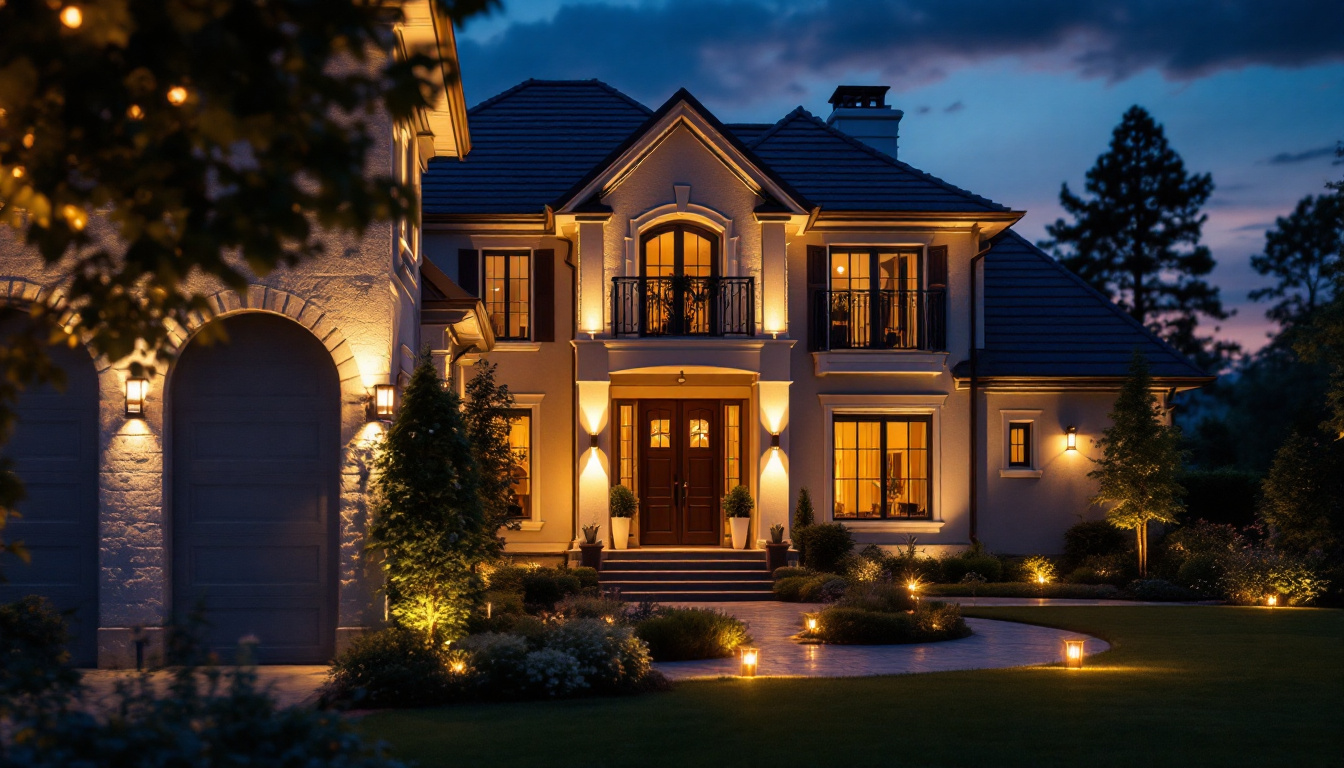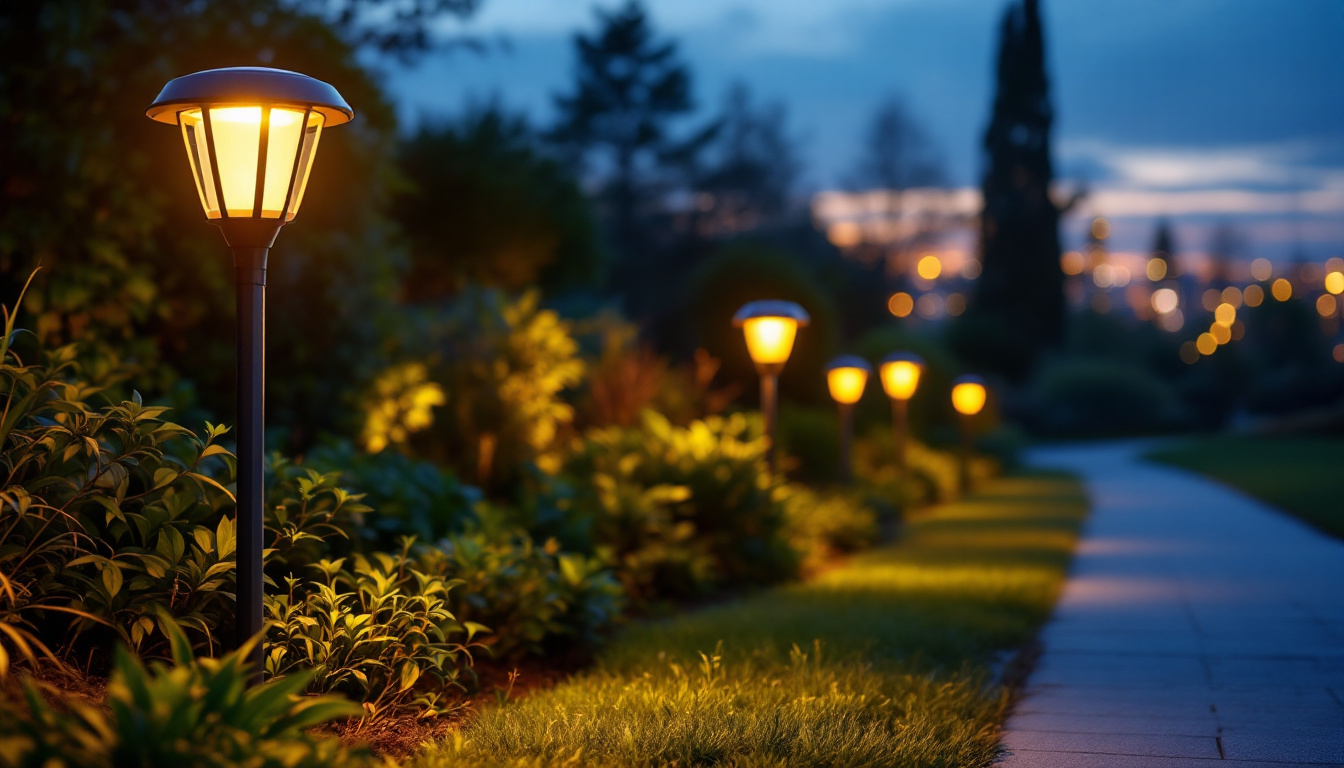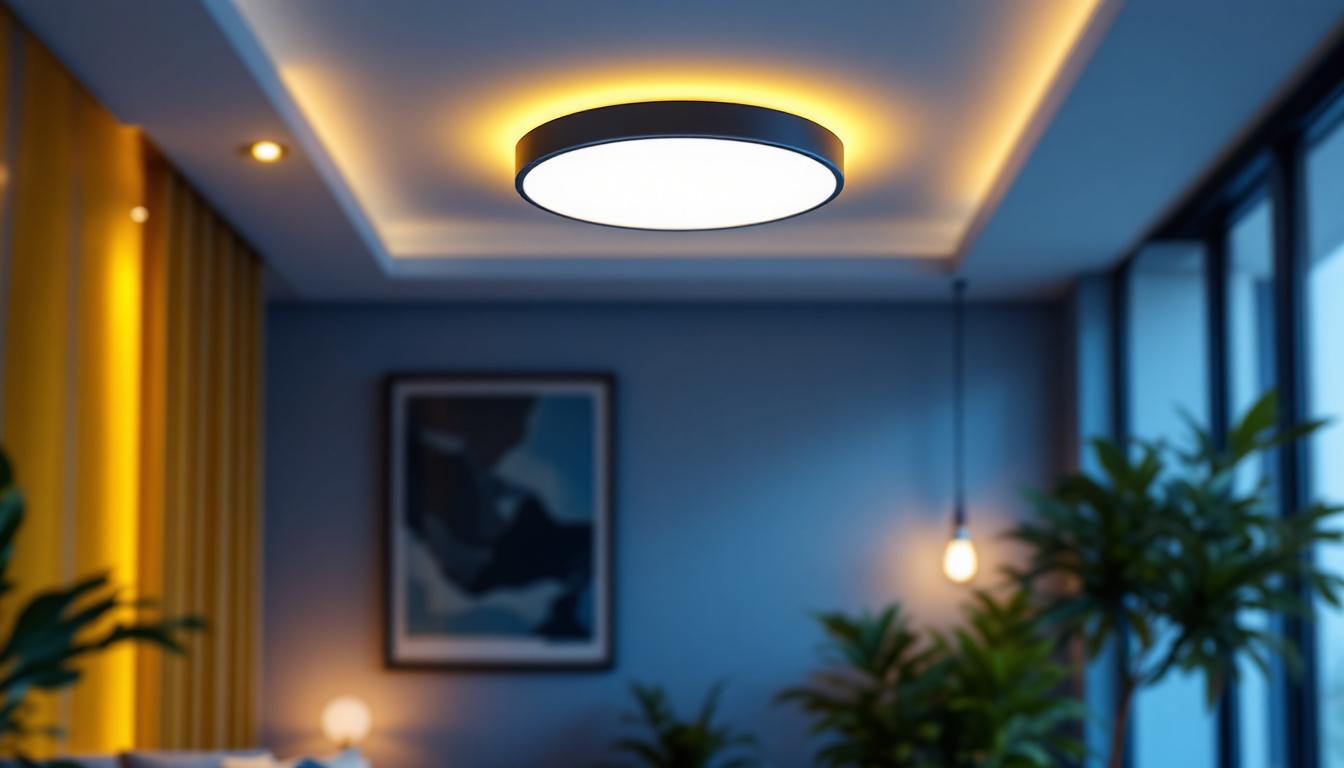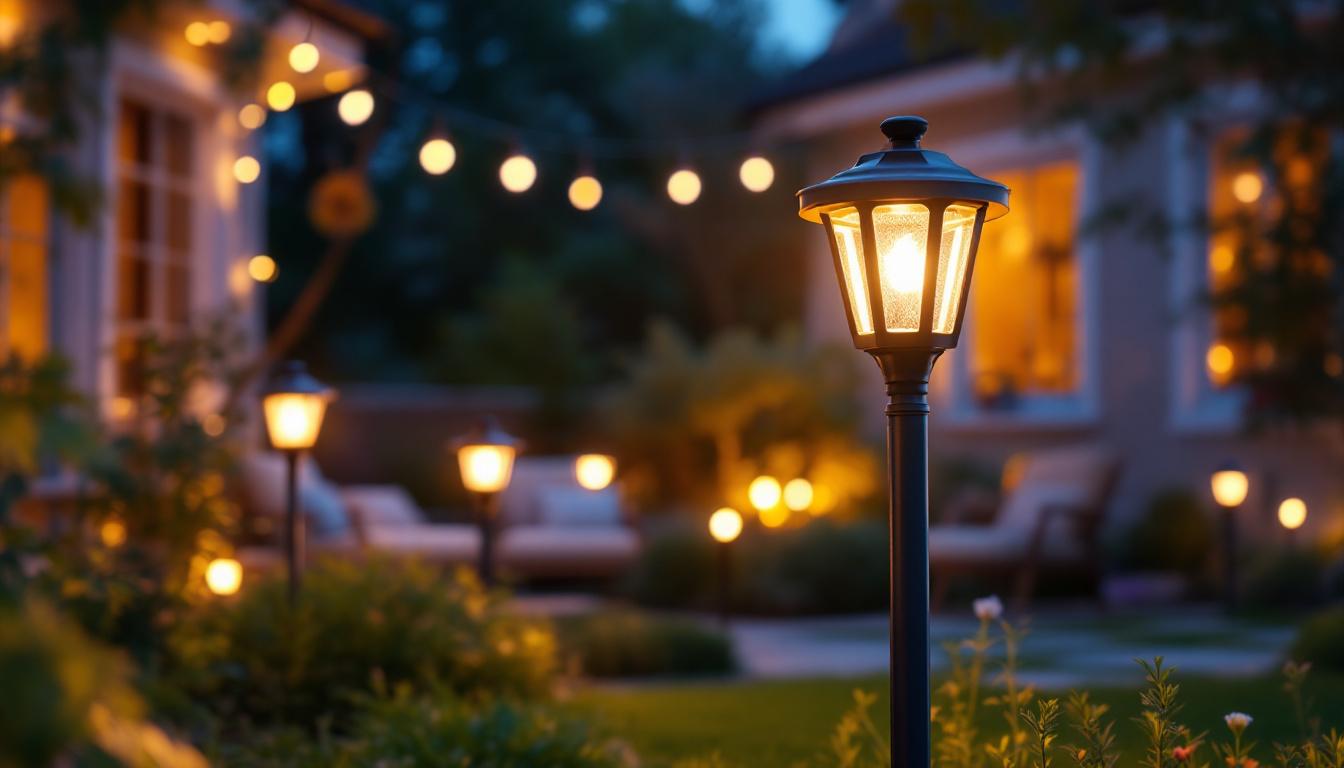
In the world of outdoor lighting, the right choices can transform a mundane exterior into a captivating landscape. For lighting contractors, mastering the art of outside house lights is not just about aesthetics; it’s also about functionality, safety, and energy efficiency. This article delves into the secrets that professionals use to create stunning outdoor lighting designs, ensuring that every project shines bright.
Before diving into the intricacies of outdoor lighting design, it is essential to grasp the fundamental concepts that underpin effective illumination. This knowledge serves as the foundation upon which lighting contractors can build their expertise.
Outdoor lighting serves various purposes, from enhancing security to creating ambiance. Understanding these functions is crucial for contractors. Security lighting, for instance, deters intruders and provides safety for homeowners navigating their property at night. On the other hand, decorative lighting adds charm and highlights architectural features, making the home inviting.
Moreover, functional lighting is necessary for pathways and driveways, ensuring safe navigation. Each type of lighting plays a distinct role, and a successful outdoor lighting plan incorporates all these elements harmoniously. Additionally, outdoor lighting can extend the usability of outdoor spaces, allowing homeowners to enjoy their gardens, decks, or patios long after sunset. This not only enhances the quality of life but can also increase property value, as well-lit homes are often more appealing to potential buyers.
Familiarity with different outdoor lighting fixtures is vital for contractors. Common types include:
Each fixture type has unique characteristics, and understanding their applications can significantly enhance a contractor’s design capabilities. For instance, solar-powered fixtures have gained popularity due to their energy efficiency and ease of installation, making them an excellent choice for environmentally conscious homeowners. Additionally, smart lighting systems are becoming increasingly prevalent, allowing homeowners to control their outdoor lighting through mobile apps or voice commands, adding a layer of convenience and modernity to traditional outdoor spaces. By staying informed about these advancements, contractors can better meet the evolving needs of their clients.
Effective outdoor lighting design requires a thoughtful approach. Contractors must consider various principles that guide the placement, intensity, and color of lights to achieve the desired effect.
Layering light involves combining different types of lighting to create depth and interest. This technique typically includes ambient, task, and accent lighting. Ambient lighting provides overall illumination, while task lighting focuses on specific areas such as patios or steps. Accent lighting highlights architectural features or landscaping, drawing attention to the beauty of the property.
By layering these elements, contractors can create a balanced and inviting atmosphere. For instance, a well-lit pathway can be complemented by accent lights that highlight nearby flower beds, creating a visually appealing environment. Additionally, incorporating dimmable fixtures allows for flexibility in mood setting, enabling homeowners to adjust the brightness according to the occasion, whether it’s a lively gathering or a quiet evening under the stars. The strategic use of color temperature in these layers can also evoke different feelings; warmer tones can create a cozy ambiance, while cooler tones may lend a more modern and sleek feel to the outdoor space.
Light levels refer to the brightness of outdoor lighting, measured in lumens. Contractors must carefully select the appropriate lumen output based on the area being illuminated. For example, a cozy seating area may require softer lighting, while a security-focused space needs brighter illumination.
Moreover, understanding how light levels interact with the surrounding environment is crucial. A well-lit area should not create harsh contrasts or glare, which can detract from the overall aesthetic. Instead, a smooth transition between light and dark areas enhances the visual appeal. The use of shielding techniques, such as placing fixtures at angles or using diffusers, can help soften the light and reduce harsh shadows. Furthermore, considering the surrounding flora and fauna is essential; certain light levels can attract unwanted insects or disturb local wildlife. By thoughtfully selecting light levels and their placement, contractors can ensure that the outdoor space remains both functional and harmonious with nature.
In today’s world, energy efficiency is a significant consideration for homeowners and contractors alike. Implementing energy-efficient practices not only reduces costs but also lessens the environmental impact.
LED bulbs have revolutionized outdoor lighting due to their energy efficiency and longevity. Unlike traditional incandescent bulbs, LEDs consume significantly less energy and have a lifespan that can exceed 25,000 hours. This makes them an ideal choice for outdoor applications, where replacing bulbs can be challenging.
Additionally, contractors should consider the color temperature of the bulbs. Warmer tones (2700K to 3000K) create a cozy atmosphere, while cooler tones (4000K and above) provide a more modern and vibrant feel. Selecting the right color temperature can enhance the overall ambiance of the outdoor space.
Smart technology is becoming increasingly popular in outdoor lighting design. Contractors can offer clients solutions that allow them to control their outdoor lights remotely or set schedules for when the lights turn on and off. This not only enhances convenience but also contributes to energy savings.
Smart outdoor lighting systems can be integrated with motion sensors, ensuring that lights only activate when needed. This feature is particularly beneficial for security lighting, as it deters potential intruders while conserving energy during inactive hours.
Safety is paramount in outdoor lighting design. Properly illuminated spaces help prevent accidents and enhance security, making it essential for contractors to prioritize safety in their projects.
Pathways and entrances are critical areas that require adequate lighting. Insufficient illumination can lead to trips and falls, especially in poorly lit areas. Contractors should ensure that pathways are lined with lights that provide even illumination, eliminating shadows and dark spots.
In addition to safety, well-lit entrances create a welcoming atmosphere for guests. Using wall-mounted fixtures or post lights can enhance visibility and add an aesthetic touch to the home’s exterior.
Outdoor lighting fixtures must withstand various weather conditions, from rain to snow. Contractors should select fixtures made from durable materials that are rated for outdoor use. Look for products with a high IP (Ingress Protection) rating, indicating resistance to dust and moisture.
Regular maintenance is also essential to ensure the longevity of outdoor lighting systems. Contractors should educate homeowners on the importance of cleaning fixtures and checking for any signs of wear or damage.
To stand out in the competitive lighting market, contractors should explore creative outdoor lighting ideas that can elevate their projects. Unique designs and innovative concepts can leave a lasting impression on clients.
Using lighting to accentuate landscape features can create a stunning visual effect. For instance, uplighting trees can reveal their majestic structure while casting intriguing shadows on the ground. Similarly, downlighting from trees can create a soft, dappled effect on patios or seating areas.
Contractors can also experiment with colored lighting to add a playful element to outdoor spaces. Color-changing LED fixtures can transform the mood of a garden or patio, making it suitable for various occasions, from intimate gatherings to festive celebrations.
Dividing outdoor spaces into distinct zones using lighting can enhance functionality and aesthetics. For example, a dining area can be illuminated with pendant lights, while a lounge area may benefit from softer, ambient lighting. This zoning creates a sense of organization and purpose within the outdoor space.
Additionally, using different lighting techniques, such as wall washing or grazing, can add texture and depth to walls and surfaces, further defining each zone.
Effective communication with clients is crucial for successful outdoor lighting projects. Understanding their needs and preferences allows contractors to create customized solutions that exceed expectations.
Before starting any project, contractors should conduct a thorough site assessment. This involves evaluating the existing landscape, noting any architectural features, and discussing the client’s vision for the space. A comprehensive assessment ensures that the lighting design aligns with the overall aesthetic and functional goals.
During this phase, contractors can also educate clients about the various lighting options available, helping them make informed decisions. Providing visual aids, such as mood boards or 3D renderings, can enhance the consultation process.
Once the outdoor lighting project is complete, contractors can offer maintenance plans to ensure the system remains in optimal condition. Regular check-ups and cleaning can extend the lifespan of the fixtures and maintain their performance.
By providing ongoing support, contractors can build lasting relationships with clients, leading to repeat business and referrals. This commitment to service can set a contractor apart in a competitive market.
Mastering outdoor lighting involves a blend of technical knowledge, creative design, and effective communication. By understanding the basics, applying design principles, prioritizing energy efficiency, and ensuring safety, lighting contractors can create stunning outdoor environments that enhance the beauty and functionality of any property.
As the demand for outdoor lighting continues to grow, staying informed about the latest trends and technologies will be essential for contractors looking to thrive in this dynamic field. By implementing the secrets shared in this article, lighting professionals can elevate their craft and deliver exceptional results for their clients.
Ready to take your outdoor lighting projects to the next level? At LumenWholesale, we provide lighting contractors with the highest quality, spec-grade lighting products at unbeatable wholesale prices. Our extensive selection is designed to meet the highest industry standards, ensuring that your installations are as stunning as they are reliable. Say goodbye to local distributor markups and hello to superior lighting with free shipping on bulk orders. Elevate your craft with the perfect blend of quality, affordability, and convenience. Discover the best value in wholesale lighting by visiting LumenWholesale today.

Discover the essentials of solar outdoor path lights in this comprehensive guide tailored for lighting contractors.

Discover innovative hacks and insights for smart lighting contractors with our comprehensive guide on LED light types.

Discover the secrets to boosting your business with modern flush mount ceiling lights.

Discover the hidden potential of solar lamps for home lighting that even seasoned contractors might miss.